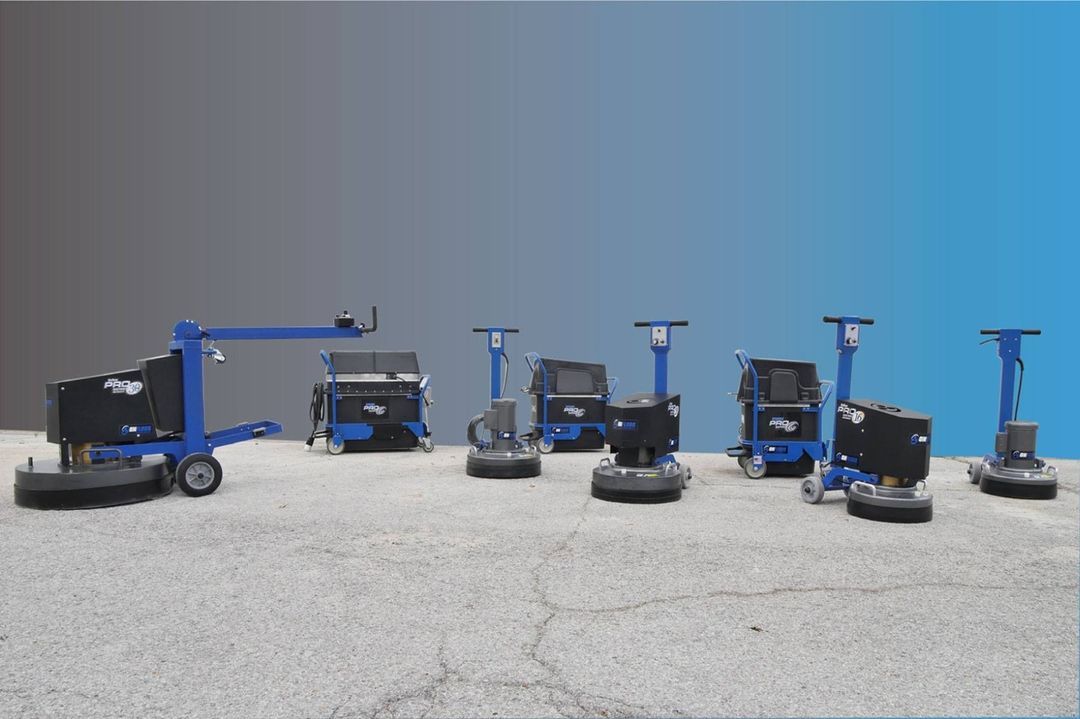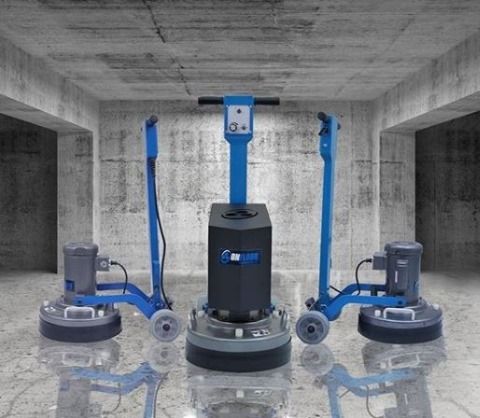Purchasing a Concrete Grinder Machine? Here are 3 Important Factors to Consider
Adding a concrete grinder to your equipment lineup can be a game-changer if purchasing the correct machine for the concrete floor game.
According to the Concrete Grinder Market Forecast for 2021 to 2029, the scenario has seen a great increase and is predicted to grow substantially due to constant global urbanization. Both residential, commercial, and industrial building projects tend to have large concrete floor areas that will eventually need polishing or grinding services for their stone surfaces.
Purchasing a concrete grinder can also be a substantial investment for concrete surface contractors, so selecting the best-fitting machine for the job is important. Making a smart decision when it comes to purchasing concrete grinding machines can have a direct impact on business, like generating repeat customers that recommend the company’s concrete floor services.
Having knowledge about the types of concrete grinding and the details like surface preparation, dry grinding, decorative concrete, coating removal, construction, and attachment maintenance and different jobs they’re capable of is the first step in making the right decision for your business.

Types of Floor Grinders
Knowing the different types of grinders that are on the market is the first step to finding the perfect fit for each project. They vary from hand-held machines to walk-behind, and from entry-level DIYsurface polishing to industrial-grade grinding.
This article will be focusing on walk-behind models that are primarily used to primarily grind concrete in residential and commercial builds projects. Many concrete grinders are multifaceted machines and can be used to polish various flooring materials or resurface wood with the simple change of a tool.
Size
Every manufacturer of floor grinders creates different sizes that are suitable for multiple job site sizes and individual purposes. Machines can differ usually between 1-4 discs, arranged in a planetary or rotary way to maximize the disc use or emphasize certain jobs, like polishing concrete or removing graffiti, polishing wood, and all the way to grinding away inches of concrete.
Discs can range widely in their size, as well. Handheld concrete grinders tend to range from 3-7 inches in diameter which can be used for surface prep, while the smaller walk-behind models on the market start around 8 or 9 inches. The largest concrete grinders have up to a 30-inch working diameter.
Speed
The speed of a machine can dictate which types of work it can or cannot do, as the speed dictates much of the power. Single-speed concrete grinders are less versatile than multi-speed but are much simpler to operate.
Low speeds are easier to control and are better for jobs that require the operator to grind edges, flatten high spots, grind cracks flat, and remove coatings. Higher speeds are more adequate for grinding down multiple surfaces and can create better time efficiency.
Grinding Pressure
Each concrete grinder has a unique grinding pressure, measured in pounds. The more pressure, the deeper the grinding will penetrate into the material, and the quicker the work will get finished.
Grinding pressure can range from 100 to 800 pounds, and is generally based on the size of the overall floor grinder. The pressure is dictated by the weight of the machine. The pressure can impact the concrete surface in different ways, either polishing concrete or complete removal of the concrete floors' top inches.
Tools and attachments
A floor grinder can allow for different tool attachments for different purposes. Most tools are diamond segmented to allow for the concrete grinding and polishing to be more efficient. Each manufacturer has a slightly different solution for how the attachment heads are secured, whether it’s screws or fasteners of some sort. Most manufacturers create varying-grit diamond or silicon carbide attachments specific for each machine that is used for finer grit polishers, edgers, sanders, or coatings, paint, and tooling removers for concrete floors and various stones.
Most manufacturers will have a comparison sheet with all of their floor grinders, so customers can select the most suitable one with ease. This is also an educational resource for those learning about the various offerings of floor grinders. See this walk behind comparison as an example.
Surface Preparation
Different machines will require different surface prep. This can also depend on if you're using the machine as a grinder or polisher, but the floor's coatings of dust can have a negative impact on the job site if the removal isn't correct. Incomplete surface prep can affect how the diamond tools cut through the inches of concrete below the machine.
A few other variables that should be considered when purchasing a floor grinding machine are whether it can perform wet or dry grinding and how often disc maintenance is needed for an optimal process.

Concrete Grinder Machine - 3 things to consider
Whether the floor grinder will be a new addition to the lineup of equipment or replacing an old machine, having knowledge about the factors that play into which concrete grinder is the best option is important. Here are 3 main factors to focus on when beginning your search for a concrete floor grinder, or comparing a lineup of machines.

What are your most common jobs?
As a contractor, every client and every job is unique. Some clients are very specific about their concrete floor needs, and some will trust the company they hired to make sturdy decisions. Some jobs are small and require meticulous detail, and some are large and require every man on the team. Designing a business, and the equipment around the most common jobs will create a more efficient workflow and a higher level of productivity.
The most important factor to consider when purchasing a floor grinder is the physical volume of the surface area of a concrete floor. Residential contractors that often work on concrete floors in bathrooms, basements, or even 1- to 2-stall garages and small patios will find more benefit from a compact 1-disk floor grinder. With commercial or industrial jobs that have large spaces of concrete that require grinding, a 3- or 4-disk walk-behind concrete grinder would be much more efficient and economic.
See this article to dive deeper into which concrete grinder is a better fit, depending on the job site's concrete floor.
A few specific questions to ask before deciding on a grinder is, can it fit through a standard-sized door? Does it need to reach sharp edges? Will the upcoming concrete floor jobs mostly be residential, or commercial buildings? Which floor materials will the grinder mostly be used on? Will it need to be multi-use, or mostly for one purpose? Creating a list with the answers to these questions can help identify the absolute necessities for a floor grinding machine.
How user-friendly is the concrete grinder?
Floor grinders need to be operated with caution, because of their quickly rotating discs, pure mass, and the dust they produce. Analyzing an individual floor grinder’s safety ratings and cautionary features is important in keeping employees safe and reducing the risk of injury.
OSHA states that floor grinding-induced concrete dust can cause irreversible damage to the lungs of the operator and any bystanders. Dust management is one of the most important safety features to look for. The best concrete grinders will have a concrete dust guard or catch to reduce pollution in the air. This can provide not only a safety precaution but a safety requirement in poorly ventilated job sites.
Many concrete surface machine manufacturers also make a special electric-powered dust vacuum for this purpose.
What are the manufacturer’s specs and reputation?
After you decide which size and style of machine you need, deciding on a brand is the final step. Each one has different technology and emphasis areas. While easily Googling ‘concrete grinder machine’ will bring you to the most popular machine sellers, taking the time to dig a bit deeper can be beneficial in the long run. Different manufacturers offer different perks like warranties, 24/7 customer service, maintenance, or complementary tools with the purchase of a grinding machine.
Reach out to the brands to ask questions. Are they friendly and easy to ask questions, or do they seem annoyed? This can be foreshadowing for if and when you need customer service from the manufacturer. What are their ratings? What are people saying about them? Do you know people that have their products? Is their website full of resources, or lacking in information? Answers to these questions can be the deciding factor between two similar machines made by two different brands.
If you have questions about the many floors grinding topics covered, reach out to onfloor.com or request a demo of any OnFloor machines here.

0 comments